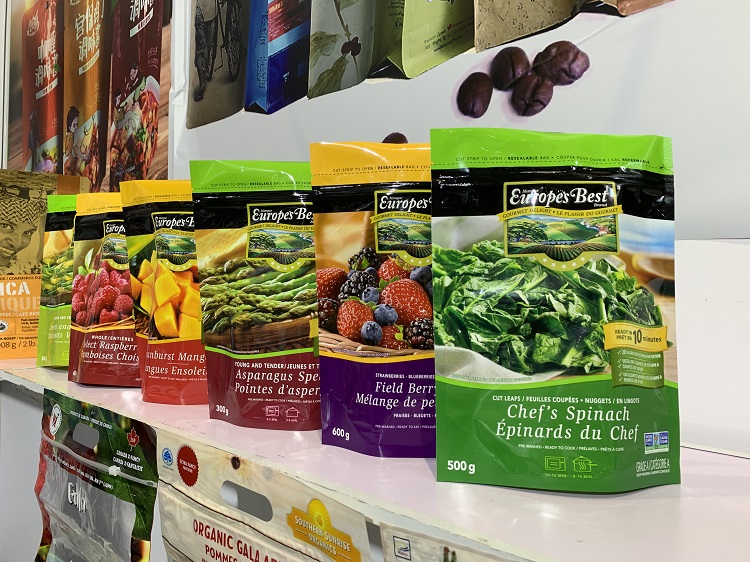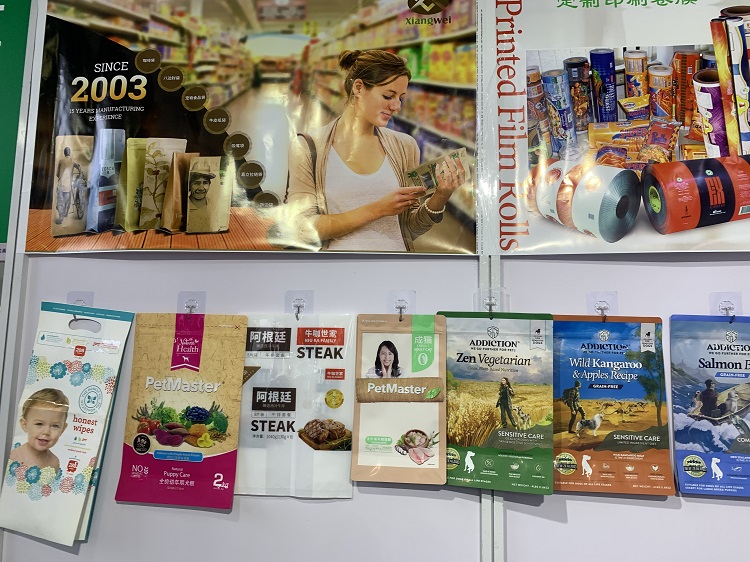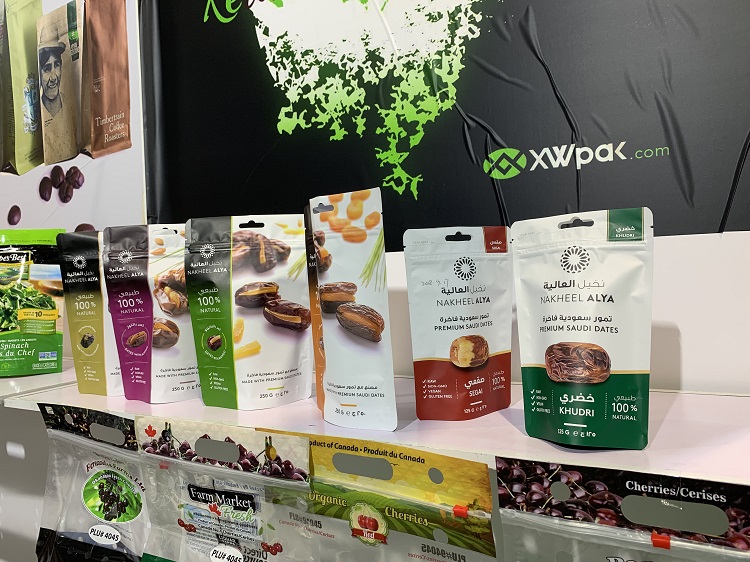1. Composite packaging containers and materials
(1) Composite packaging container
1. Composite packaging containers can be divided into paper/plastic composite material containers, aluminum/plastic composite material containers, and paper/aluminum/plastic composite material containers according to materials. Has good barrier properties.
2. Paper/plastic composite containers can be divided into paper/plastic composite bags, paper/plastic composite cups, paper/plastic composite paper bowls, paper/plastic composite plates and paper/plastic lunch boxes according to their shapes.
3. Aluminum/plastic composite containers can be divided into aluminum/plastic composite bags, aluminum/plastic composite barrels, aluminum/plastic composite boxes, etc. according to their shapes.
4. Paper/aluminum/plastic composite containers can be divided into paper/aluminum/plastic composite bags, paper/aluminum/plastic composite tubes, and paper/aluminum/plastic composite bags according to their shapes.
(2) Composite packaging materials
1. Composite packaging materials can be divided into paper/plastic composite materials, aluminum/plastic composite materials, paper/aluminum/plastic composite materials, paper/paper composite materials, plastic/plastic composite materials, etc. according to their materials, which have high mechanical strength, Barrier, sealing, light-shielding, hygienic, etc.
2. Paper/plastic composite materials can be divided into paper/PE (polyethylene), paper/PET (polyethylene terephthalate), paper/PS (polystyrene), paper/PP (propylene )wait.
3. Aluminum/plastic composite materials can be divided into aluminum foil/PE (polyethylene), aluminum foil/PET (polyethylene terephthalate), aluminum foil/PP (polypropylene), etc. according to the material.
4. Paper/aluminum/plastic composite materials can be divided into paper/aluminum foil/PE (polyethylene), paper/PE (polyethylene)/aluminum foil/PE (polyethylene) and so on.

2. Abbreviations and Introduction
AL - aluminum foil
BOPA (NY) biaxially oriented polyamide film
BOPET (PET) biaxially oriented polyester film
BOPP biaxially oriented polypropylene film
CPP cast polypropylene film
EAA vinyl-acrylic plastic
EEAK ethylene-ethyl acrylate plastic
EMA vinyl-methacrylic plastic
EVAC ethylene-vinyl acetate plastic
IONOMER Ionic Copolymer
PE polyethylene (collectively, can include PE-LD, PE-LLD, PE-MLLD, PE-HD, modified PE, etc.):
——PE-HD High Density Polyethylene
——PE-LD Low Density Polyethylene
——PE-LLD linear low density polyethylene
——PE-MD medium density polyethylene
——PE-MLLD metal bag low density polyethylene
PO polyolefin
PT cellophane
VMCPP vacuum aluminized cast polypropylene
VMPET vacuum aluminized polyester
BOPP (OPP)——biaxially oriented polypropylene film, which is a film made of polypropylene as the main raw material and biaxially stretched by the flat film method. It has high tensile strength, high rigidity, and transparency. Good, good gloss, low static performance, excellent printing performance and coating adhesion, excellent water vapor and barrier properties, so it is widely used in various packaging industries.
PE - Polyethylene. It is a thermoplastic resin obtained by polymerization of ethylene. In industry, it also includes copolymers of ethylene and a small amount of α-olefins. Polyethylene is odorless, non-toxic, feels like wax, has excellent low temperature resistance (the lowest operating temperature can reach -100~-70°C), good chemical stability, and can withstand most acid and alkali erosion (not resistant to oxidation) nature of the acid). Insoluble in common solvents at room temperature, low water absorption, excellent electrical insulation.
CPP—that is, cast polypropylene film, also known as unstretched polypropylene film, can be divided into general CPP (General CPP, GCPP for short) film and aluminum-coated CPP (Metalize CPP, MCPP for short) film according to different uses And cooking grade CPP (Retort CPP, RCPP for short) film, etc.
VMPET - refers to polyester aluminized film. Applied to the protective film on the packaging of dry and puffed food such as biscuits and the outer packaging of some medicines and cosmetics.
The aluminized film has both the characteristics of a plastic film and the characteristics of a metal. The role of aluminum plating on the surface of the film is to shading and prevent ultraviolet radiation, which not only prolongs the shelf life of the contents, but also improves the brightness of the film. , the application of aluminized film in composite packaging is very extensive. At present, it is mainly used in the packaging of dry and puffed food such as biscuits, as well as the outer packaging of some medicines and cosmetics.
PET - also known as high temperature resistant polyester film. It has excellent physical properties, chemical properties and dimensional stability, transparency, and recyclability, and can be widely used in magnetic recording, photosensitive materials, electronics, electrical insulation, industrial films, packaging decoration, screen protection, optical mirrors Surface protection and other fields. High temperature resistant polyester film model: FBDW (one-sided matte black) FBSW (double-sided matte black) High temperature resistant polyester film specifications Thickness width roll diameter core diameter 38μm~250μm 500~1080mm 300mm~650mm 76mm(3〞), 152mm (6〞) Note: Width specifications can be produced according to actual needs. The usual length of film roll is 3000m or 6000 equivalent to 25μm.
PE-LLD—Linear Low Density Polyethylene (LLDPE), non-toxic, tasteless, odorless milky white particles with a density of 0.918~0.935g/cm3. Compared with LDPE, it has a higher softening temperature and melting temperature, and has the advantages of high strength, good toughness, high rigidity, heat resistance, and cold resistance. It also has good environmental stress cracking resistance, impact strength, and durability. Tear strength and other properties, and can be resistant to acids, alkalis, organic solvents, etc. and are widely used in the fields of industry, agriculture, medicine, hygiene and daily necessities. The linear low-density polyethylene (LLDPE) resin, known as the third-generation polyethylene, has tensile strength, tear strength, environmental stress cracking resistance, low temperature resistance, and Heat and puncture resistance are particularly superior.
BOPA (NYLON) - is the English abbreviation of Biaxially oriented polyamide (nylon) film. Biaxially oriented nylon film (BOPA) is an important material for the production of various composite packaging materials, and has become the third largest packaging material after BOPP and BOPET films.
Nylon film (also called PA) Nylon film is a very tough film with good transparency, good gloss, high tensile strength and tensile strength, and good heat resistance, cold resistance and oil resistance. Good resistance to organic solvents, abrasion resistance, puncture resistance, and relatively soft, excellent oxygen resistance, but poor barrier to water vapor, high moisture absorption, moisture permeability, poor heat sealability, suitable for It is suitable for packaging rigid items, such as greasy food, meat products, fried food, vacuum-packed food, steamed food, etc.
Our films and laminates create a layer of insulation that keeps your product protected from any damage when once packaged. Many types of packaging materials including polyethylene, polyester, nylon, and others listed below are used to create this laminate barrier.

FAQ
Question 1: How to choose materials for frozen food?
Answer: The plastic flexible packaging used in the field of frozen food is mainly divided into three categories: the first category is single-layer bags, such as PE bags, which have poor barrier effect and are generally used for vegetable packaging, etc.; the second category is composite flexible plastic bags, such as OPP bags //PE (poor quality), NYLON//PE (PA//PE is better), etc., have good moisture-proof, cold-resistant, and puncture-resistant properties; the third category is multi-layer co-extruded soft plastic bags, which combine raw materials with different functions, For example, PA, PE, PP, PET, etc. are melted and extruded separately, and combined at the total die head through inflation molding and cooling. The second type is more commonly used at present.
Question 2: What kind of material is better for biscuit products?
Answer: OPP/CPP or OPP/VMCPP is generally used for biscuits, and KOP/CPP or KOP/VMCPP can be used for better flavor retention
Question 3: I need a transparent composite film with better barrier properties, so which one has better barrier properties, BOPP/CPP k coating or PET/CPP?
Answer: K coating has good barrier properties, but the transparency is not as good as that of PET/CPP.

Post time: May-26-2023



